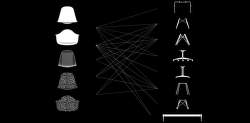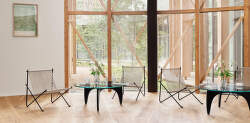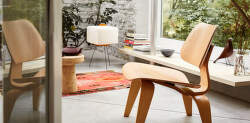Perhaps no piece of furniture means as much in the world of modern design as the Eames Chair, which can be found in the Vitra range. We are therefore thrilled that you can now find these gems in the DesignVille range and you can also see them in our showroom. But as befits icons, they deserve a proper welcome and introduction - so read on!
A little bit of history
The Eames Chair was designed in the early 1950s by designers and husband and wife team Charles and Ray Eames. In doing so, they sought to create a chair that was the essence of their professional belief - "to get the most out of the best for the least". With this motto in mind, they then approached the design of a chair made from a single piece of plastic that would adapt perfectly to the human body while offering high quality workmanship and ease of manufacture and handling.

This is how the chair that was first presented at the Low-Cost Furniture Design competition in the A-shell (Armchair) and S-shell (Sidechair) versions was created. In 1950 it was launched as the first mass-produced chair made of fibreglass, which had not been used for furniture until then. The Eames chair thus became a pioneer of modern design - not only because of the uniqueness of the material, but also because of its multifunctionality.
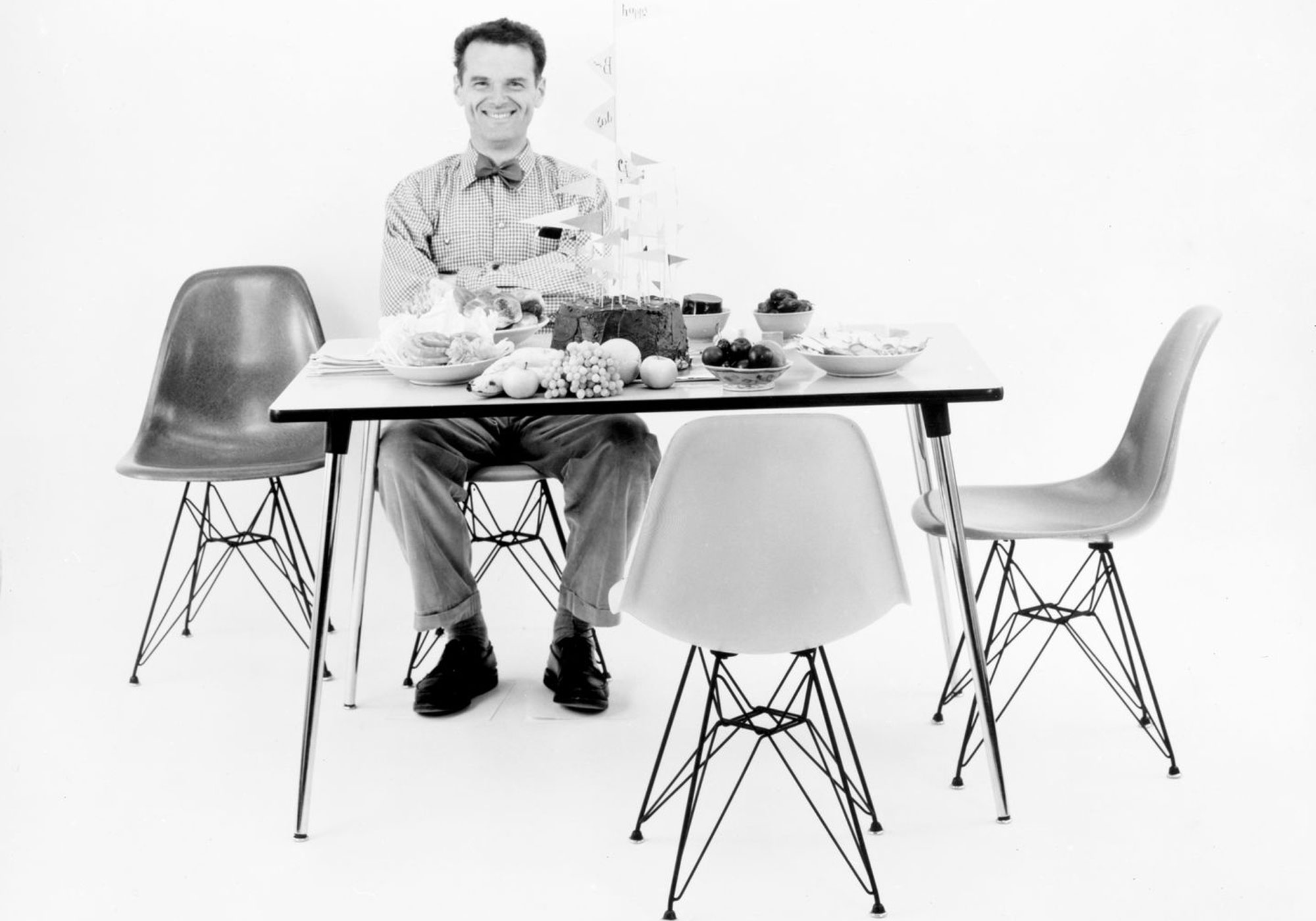
In the early days of production, Eames introduced several types of shells and bases that offered endless possibilities for the chair's use in the home, office and public spaces. As time went on, Vitra began to produce chairs made of stronger polypropylene in 14 colour options with wood or steel wire bases instead of the fragile fibreglass. This makes it easy to combine a chair that meets your vision of the perfect piece of furniture, which, thanks to its quality, will accompany you for decades to come.
Almost unbreakable chair
The first Eames chair was created in 1950, so its design is proven by almost 70 years of use, which has also honed it to perfection. This makes Eames chairs virtually unbreakable - all of its components are of such high quality that it's really hard to destroy. And if any part does suffer damage, it's very easy to replace by removing the base from the seat and simply replacing it. The DKR variant is a truly indestructible piece of furniture thanks to its all-wire construction.
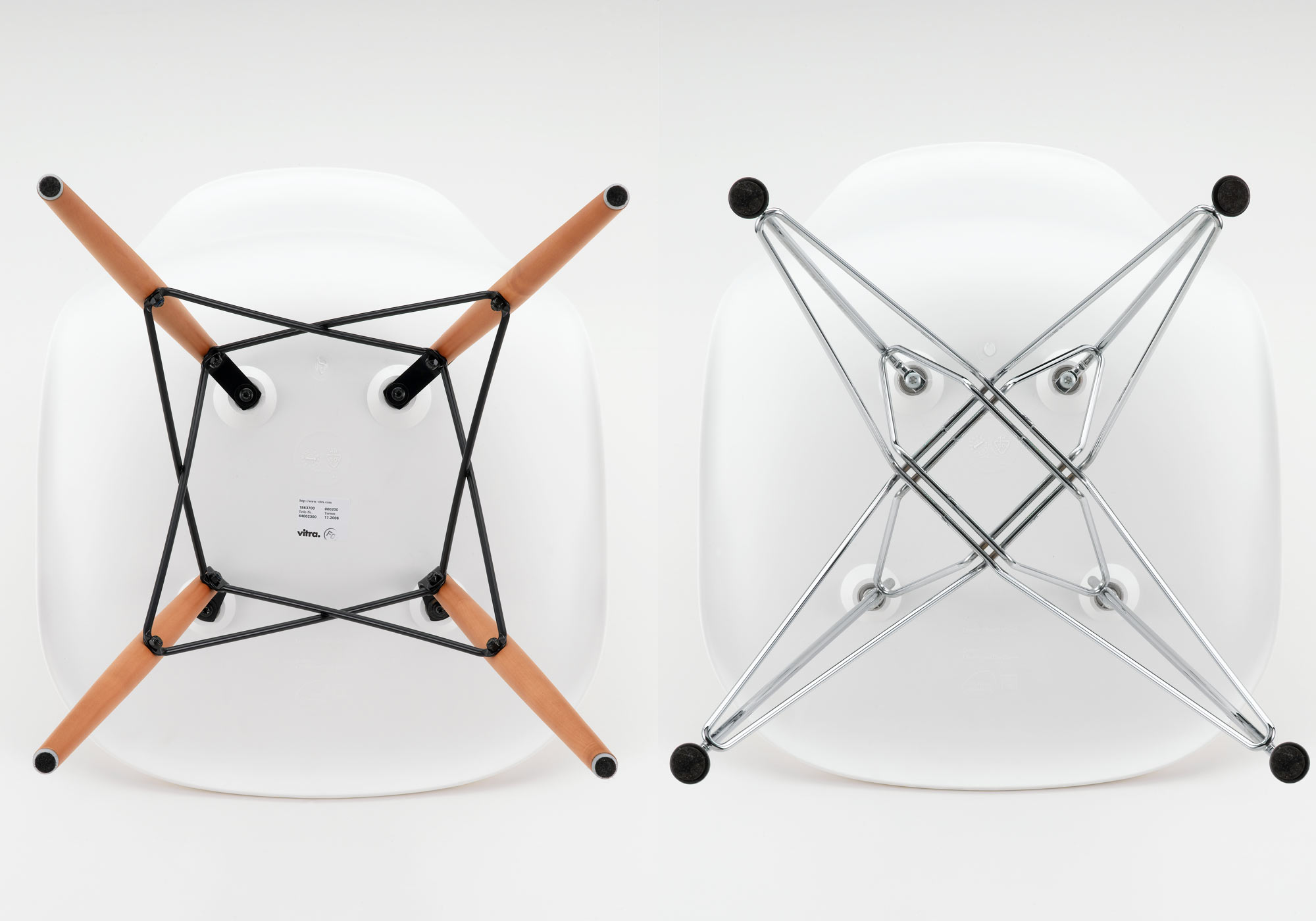
Eames Chair DSW (Dining Sidechair Wood)
Eames ChairDSW is a side-backless chair with a wooden base in three wood finishes, combined with a seat in neutral and vibrant colours, creating a friendly and cosy feel that will fit in perfectly in the home, office and elsewhere - you'll find it at the Musée de la Photographie in Charleroi, for example.
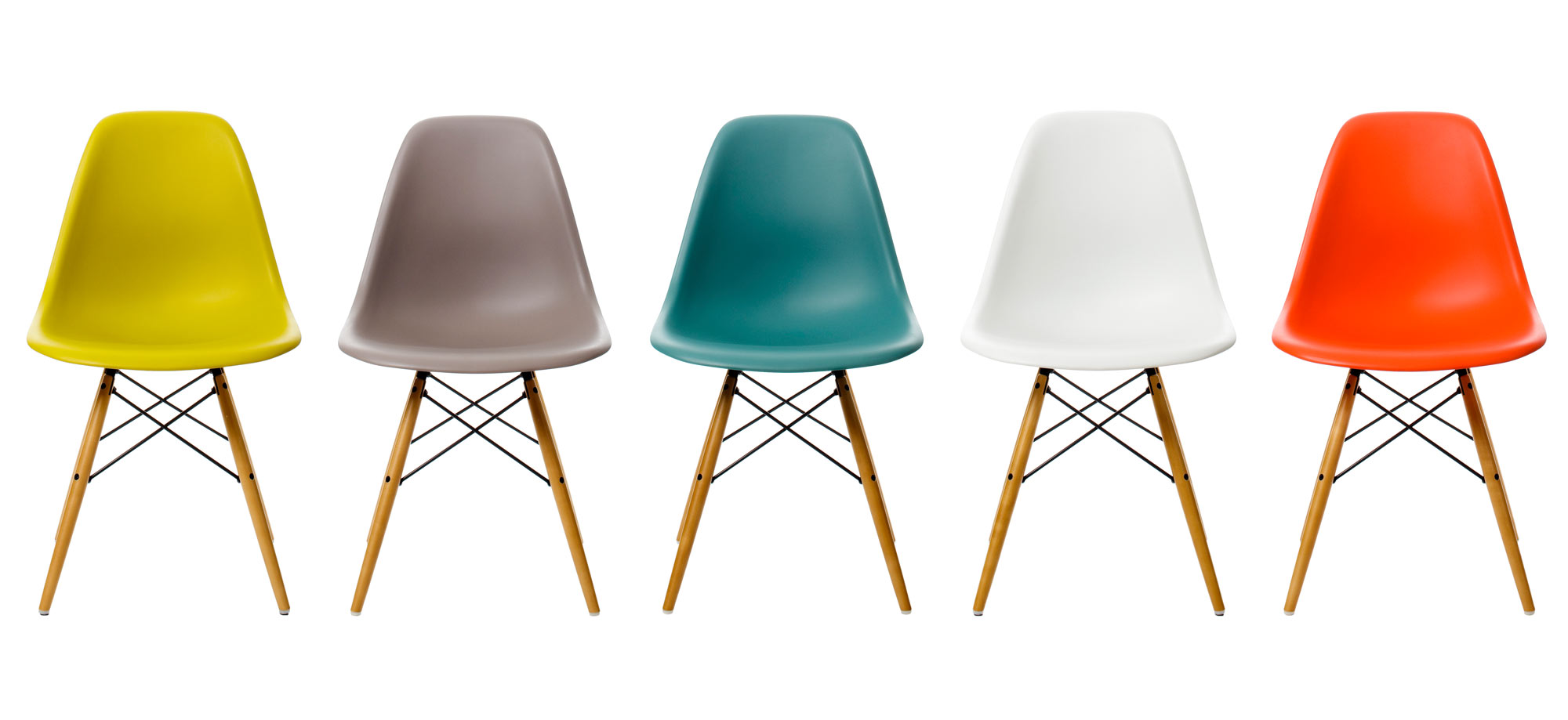
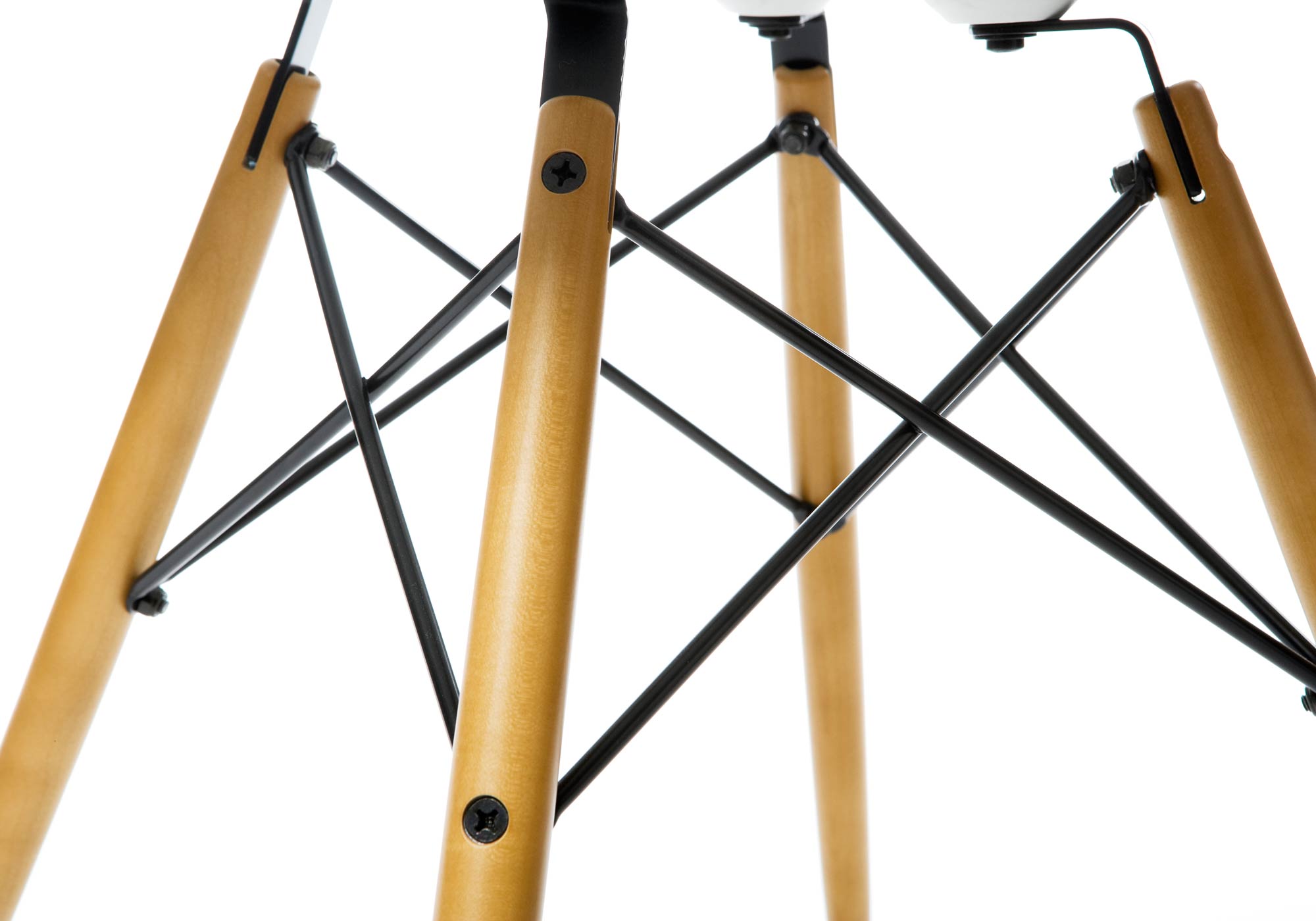


Eames Chair DSR (Dining Sidechair Rod)
Chair Eames DSRcombines a backless seat and a wire base that has become a household name in the furniture industry. Called the "Eiffel Tower", its revolutionary steel wire construction inimitably combines light, elegant shapes with the structural strength of steel wire. Both the chrome finish and the modern black version are popular.
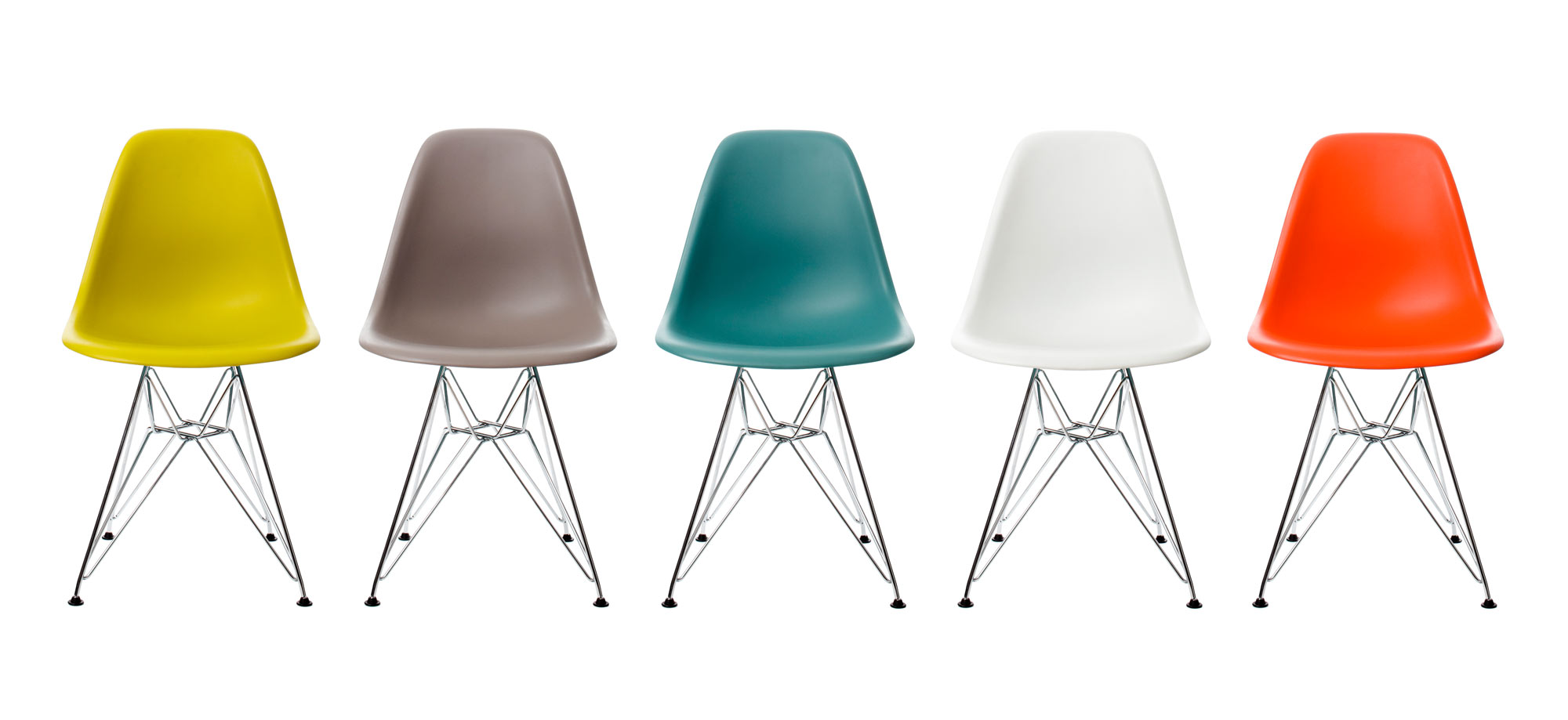
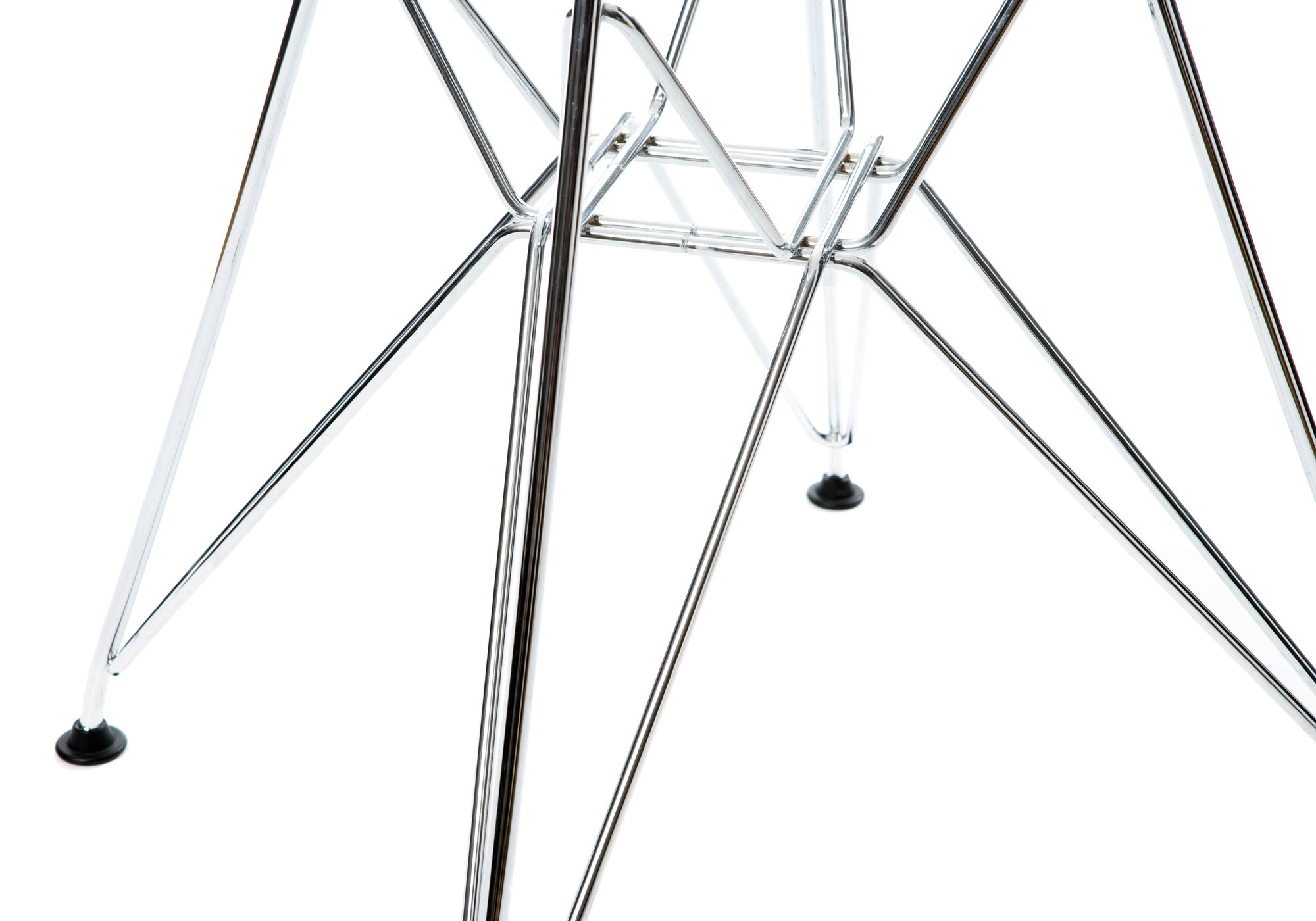
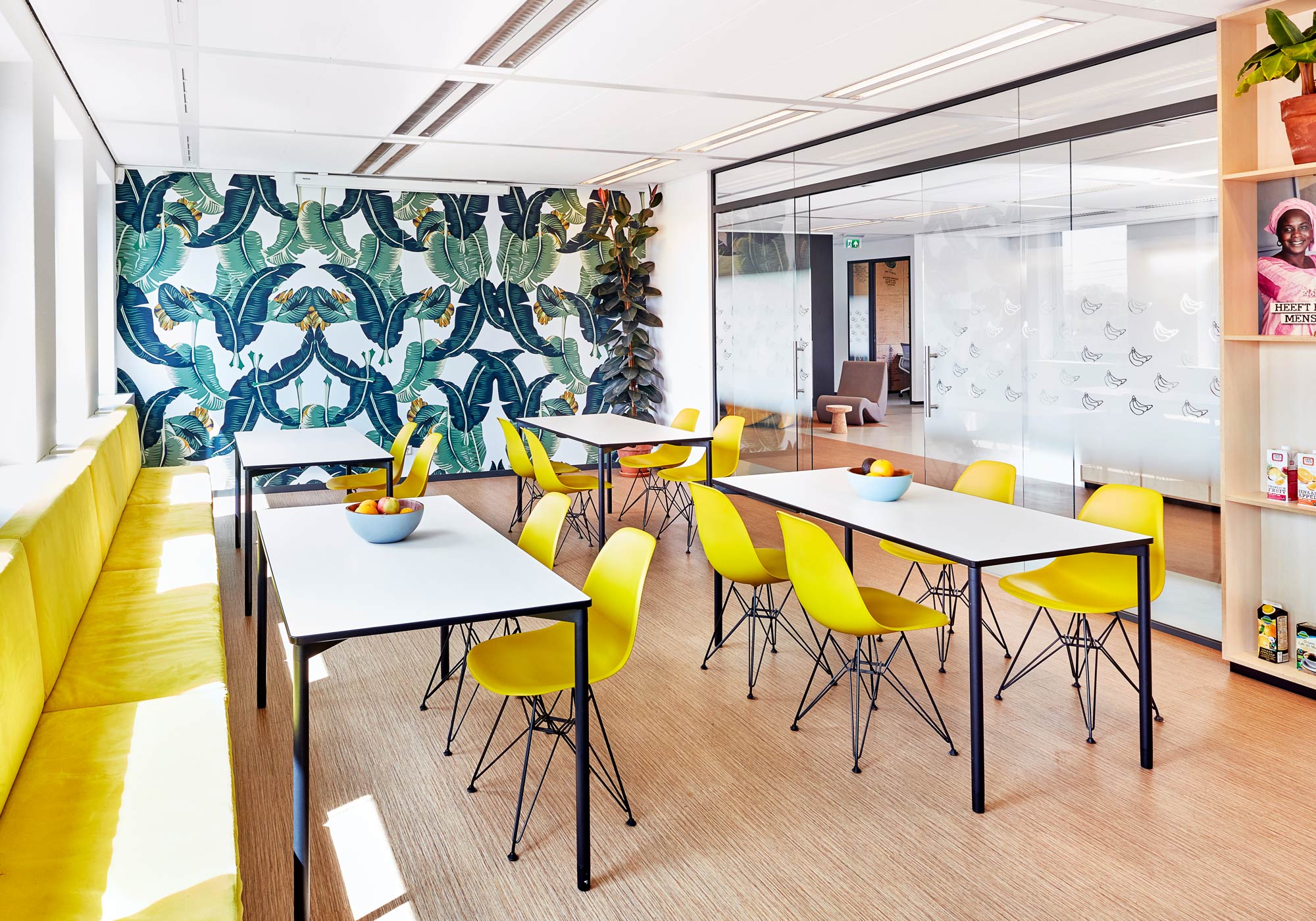
Eames Chair DAW (Dining Armchair Wood)
The DAW chair with armrests offers arm support in addition to back support. The Eames family was one of the first to design this type of seat as early as 1950, and today the morphology of this seat is seen by many as the archetype of the chair itself. Like the others, this chair is also offered with upholstery in a myriad of fabric colours.

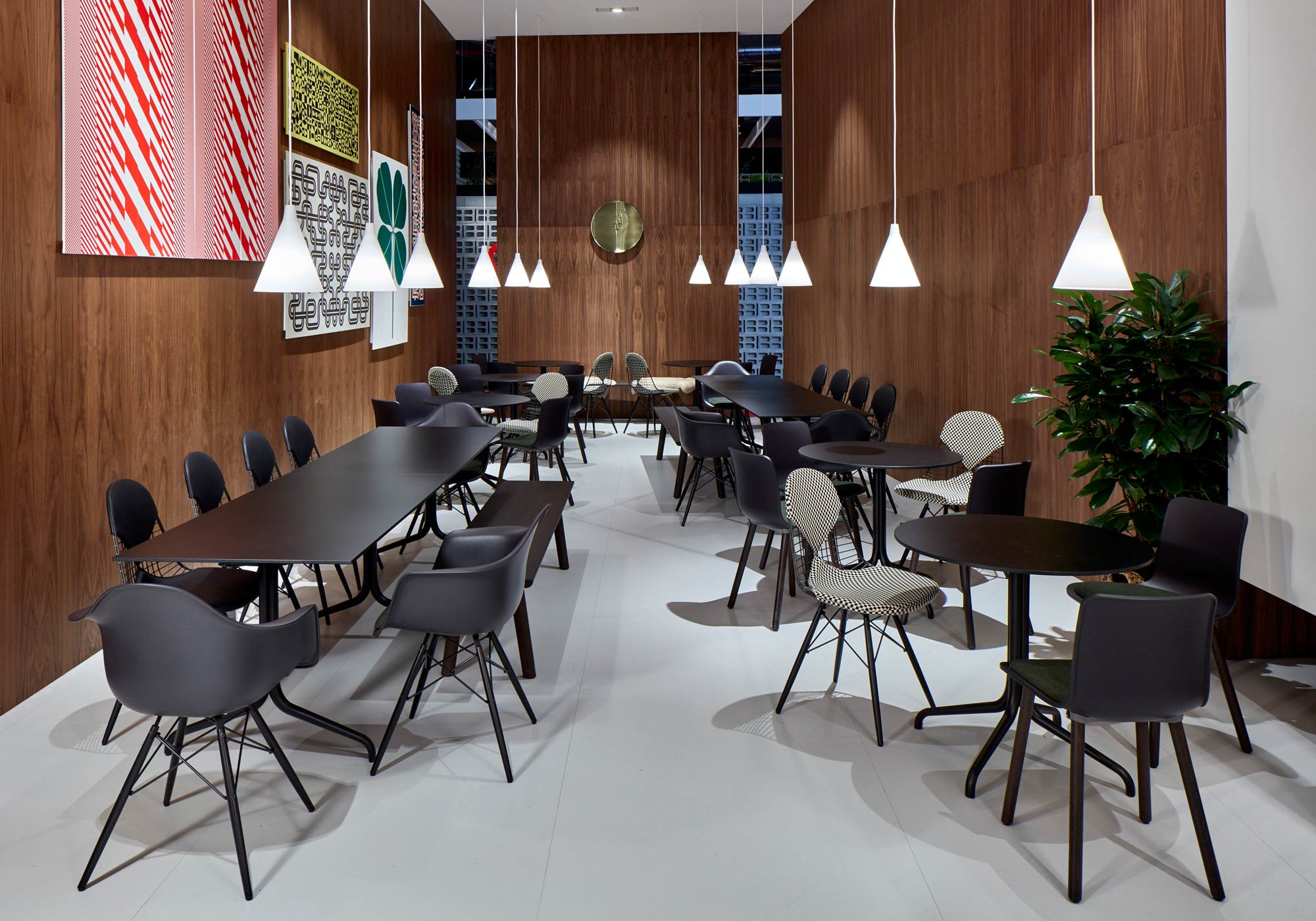
Eames Chair DAR (Dining Armchair Rod)
Combination of a wire "Eiffel Tower" base and a seat with armrests in the chair Eames DAR offers a rich source of contrast. This type has an unmistakable design that combines the elegant lines of the seat and the stability of the wire construction.
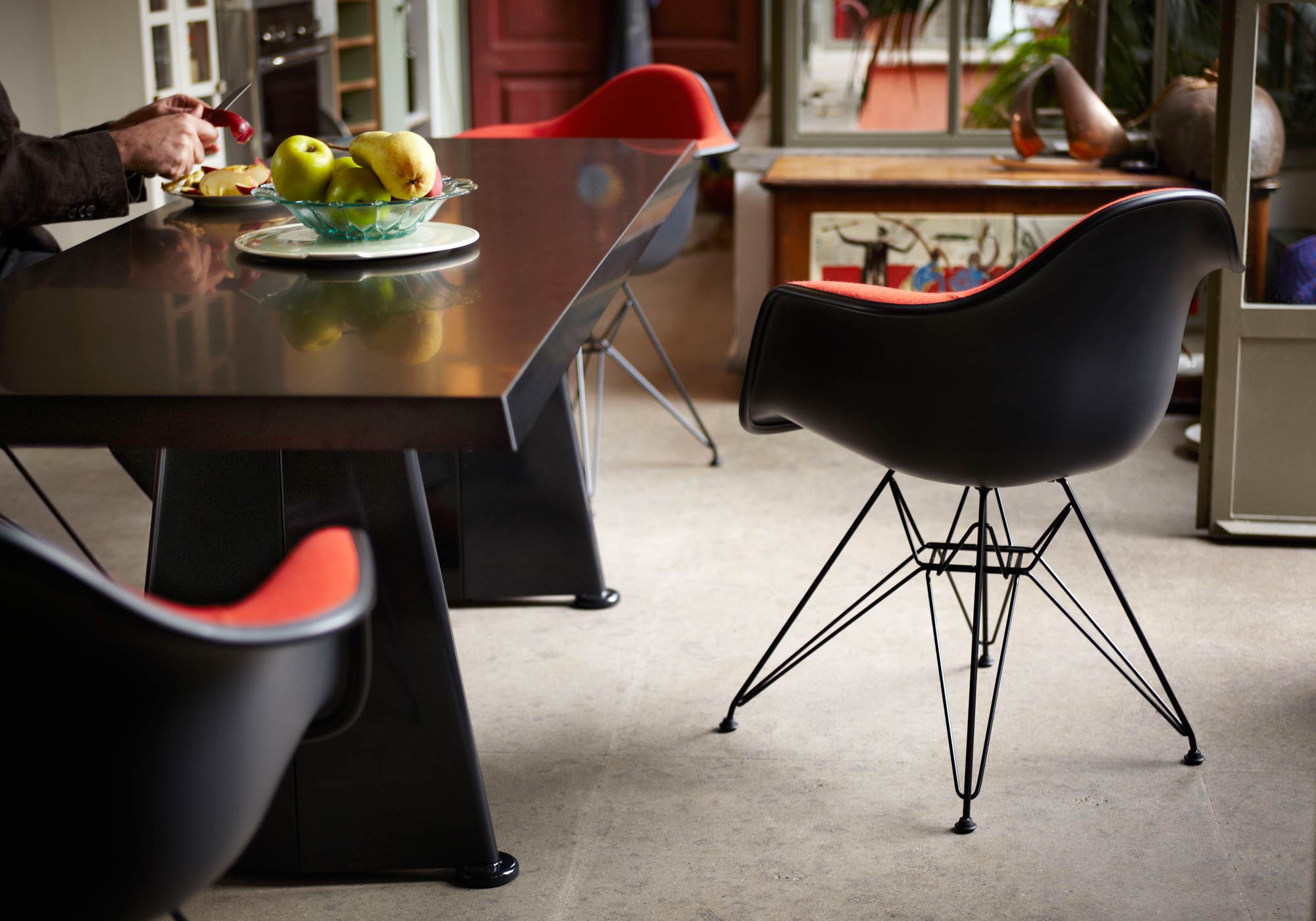
Eames Chair RAR (Rocking Armchair Rod)
Rocking Chair RARcombines elements of the previous chair types - the seat with armrests, wire base and wooden rocker arms combine to create a stylish rocking chair that instantly puts you in relaxed mode so you can enjoy a cup of coffee or a good book while you sit (or rock).
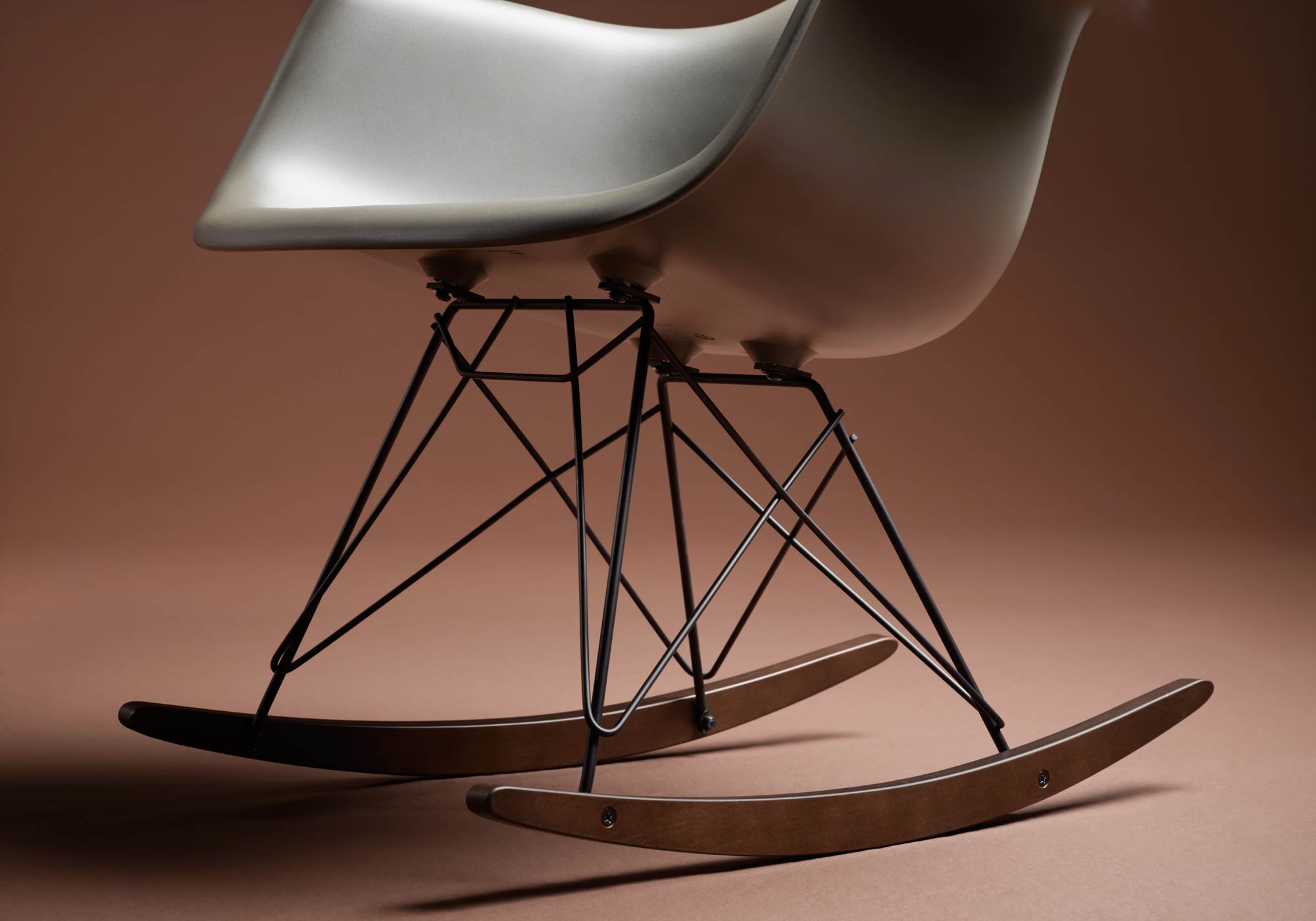

Eames Chair DKR and DKR-2
The Eames chair collection is complemented by a full-wire version DKR and its sister DKR-2 with a textile or leather cover, which is called "bikini" because of its typical shape. The DKR chairs, which the Eames family designed just one year after the previous types (in 1951), have a very airy feel thanks to their wire construction, and the painted metal version will easily accompany you even when sitting outdoors.
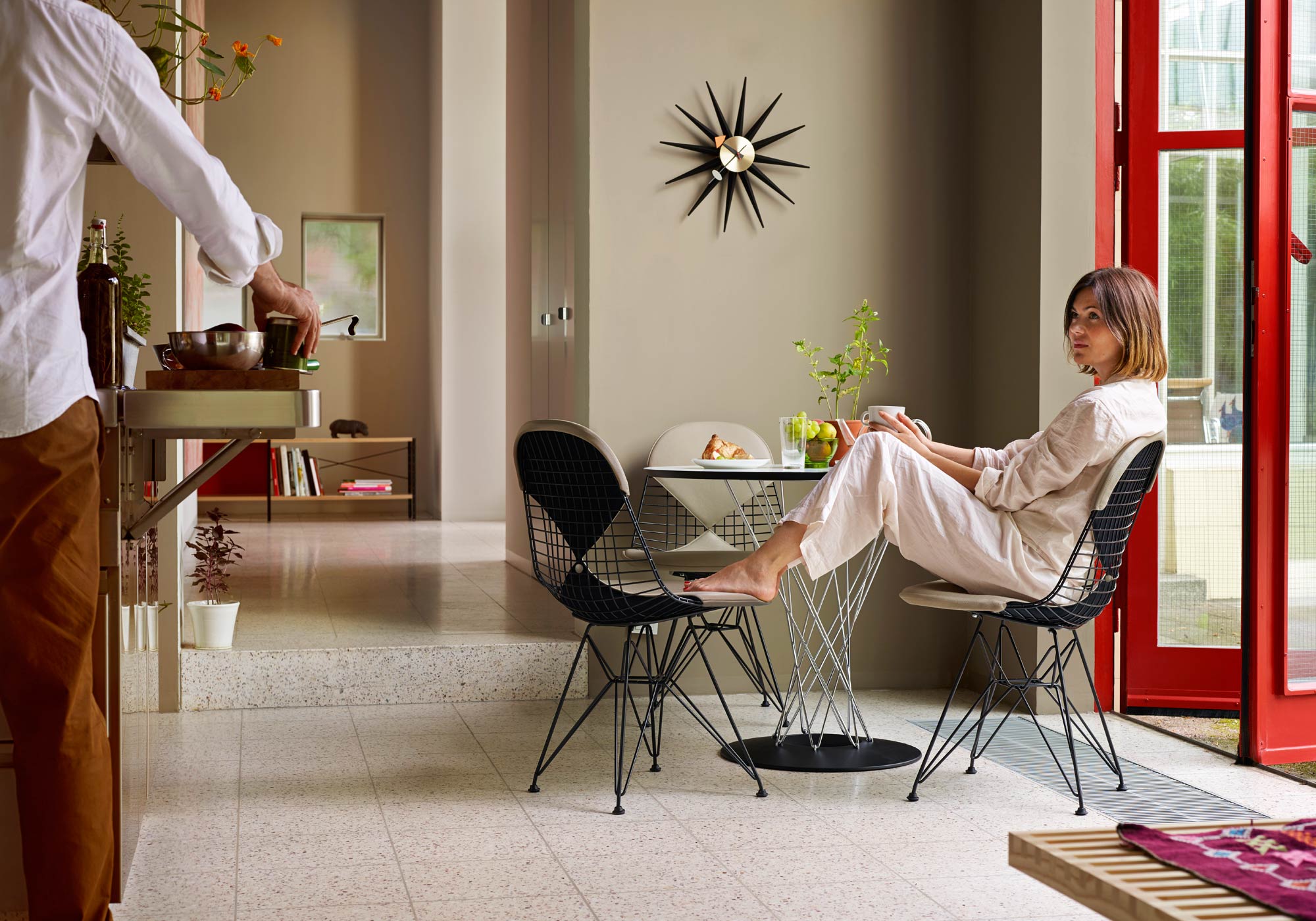
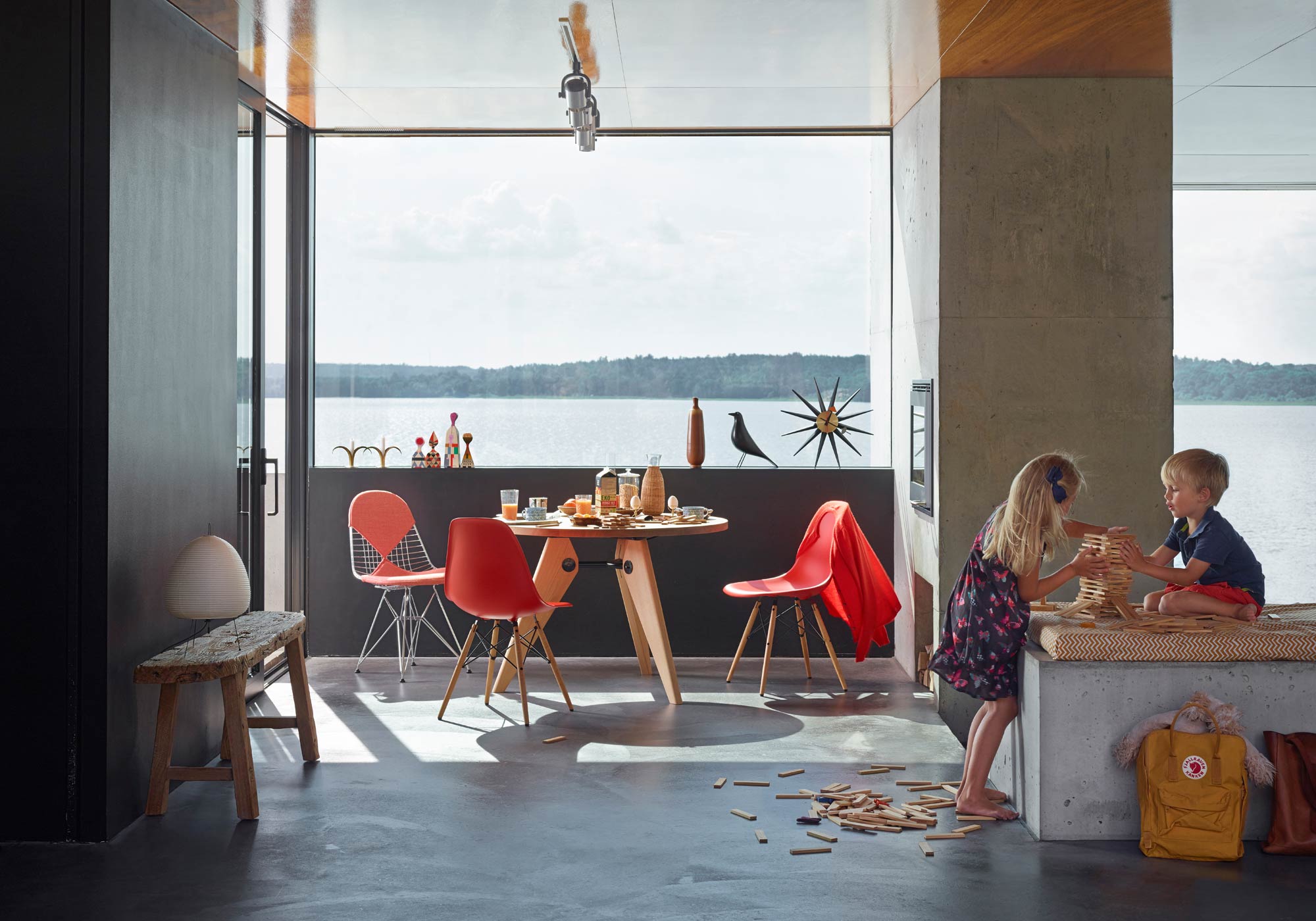
So there are 14 seat colours and several colours of wooden and metal bases. This makes for a virtually infinite number of combinations, which is further complemented by the fact that the plastic seat cushions can also be made with upholstery in countless fabric and leather colours. In addition, Vitra has made slight adjustments to the dimensions of the chairs in the past year to make them even more comfortable and to better match current seating requirements.
You will find a sample of each of these chair types in our showroom, so we cordially invite you to visit!
Photo: vitra.com

